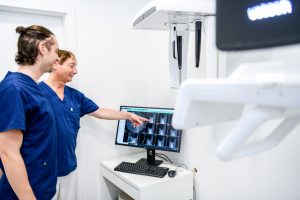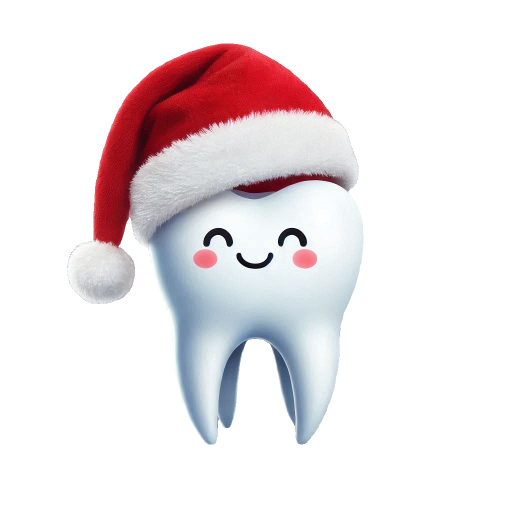 Our clinic is equipped with such modern diagnostic machinery as a panoramic X-ray and intra-oral X-ray; Dental radiographs are commonly called X-Rays. Dentists use radiographs for many reasons: to find hidden dental structures, malignant or benign masses, bone loss, and cavities.
Our clinic is equipped with such modern diagnostic machinery as a panoramic X-ray and intra-oral X-ray; Dental radiographs are commonly called X-Rays. Dentists use radiographs for many reasons: to find hidden dental structures, malignant or benign masses, bone loss, and cavities.
Dental screenings almost always start with a comprehensive X-ray, called a panoramic X-ray. Thus, in addition to the oral examination, we also have the opportunity to examine the invisible details, the areas under the gums, the points between the teeth, and any inflammation.
The panoramic X-Ray The panoramic X-ray shows all the teeth, the bone, and the course of the facial and nasal cavities, joints, and nerves. Inflamed tissues in the bone provide a special X-ray, and we can examine the quality of the fillings and prostheses in detail. A new X-ray of each of our patients is taken every two years to keep track of the changes and the condition of our mouths.
Why is a dental x-ray so necessary?
During the consultation and examination, a panoramic X-ray or CT / CBCT X-ray will be taken to ascertain the health of the teeth and the invisible problems in the gums.
Dental X-ray (panoramic X-ray) is one of the most important parts of dental screening.
Why come for a dental checkup?
Dental screenings are recommended annually as they aid the early detection of any potentially arising problems and the maintaining of a good oral health. Remember that it doesn’t matter if you only need a dental filling or a complex root canal treatment. We also provide constructive feedback on your oral hygiene, advising on what toothbrush, toothpaste, mouthwash, and floss to use and which ones to avoid.
What is a panoramic x-ray?
Digital panoramic X-rays take two-dimensional images of the entire oral cavity and teeth, so the two jaws can be displayed in a single image.
3D CT is now essential for planning dental and oral surgery, whether it is implant placement, bone replacement, wisdom tooth removal, root canal treatment, or orthodontic treatment.

3D CbCT - For Dental Implant Implantation
A 3D CT scan of the region is essential for a safe dental implant implanted. This dramatically eliminates unexpected complications and risks associated with the intervention. Today, the most advanced procedure is CT implanted implant placement, which puts the implant in the ideal position.
2D Panorama and Cephalometric X ray - For orthodontic treatment
Proper planning is essential when it comes to orthodontic treatment. It consists of two recordings: Panorama and Cephalometric X-ray. In more complex cases, 3D CT imaging is also typical.
What types of problems does an x-ray help detect?
X-rays help us diagnose the condition of our teeth and jaw.
Regarding adults, X-rays show:

On the small X-ray, only 1-2 teeth are visible, but they are in much better resolution. In the case of a condition survey, we start with a panoramic X-ray to see what problems the given patient may have. In the case of a specific, localizable complaint, however, they reach for a small x-ray to see the given tooth in perfect quality and high resolution.

Should you have any further questions regarding our clinic’s radiography, please do not hesitate to contact us.

Kedves Pácienseink!
Rendelőnk december 21. és január 5. között zárva tart! Kellemes ünnepeket kíván csapatunk és várjuk Önöket január 6.-tól.
Dear Patients,
Please note that we will be closed from 21 December- 5 January. We wish you all a joyful holiday season and a Merry Christmas! Our clinic will reopen on January 6th, and we look forward to seeing you in the new year.